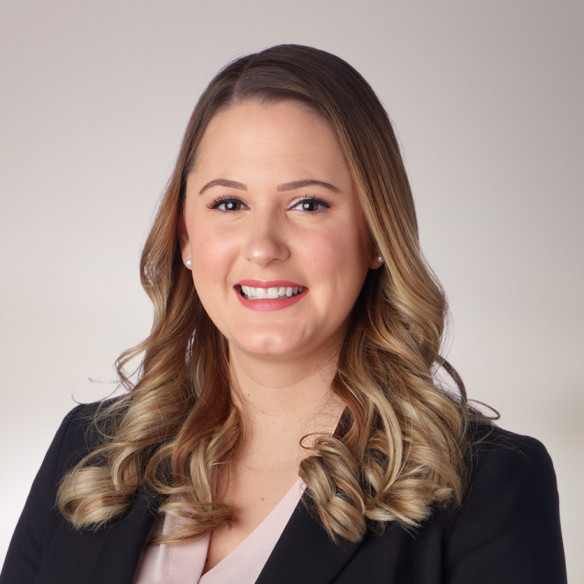We were proud to collaborate with Private Funds CFO on this article. To view the original, edited version of this article please visit https://www.privatefundscfo.com/.
Private fund managers are facing a myriad of issues from COVID-19 market disruptions: portfolio companies with declining revenues, liquidity concerns, CARES Act issues, and difficulty marketing, and securing new investors for, funds currently being raised. Another area of concern that fund managers should not overlook is the potential for carried interest return obligations under their fund agreements’ general partner clawback provisions. While clawback obligations may not have the same sense of urgency as many of the other current market‑driven issues, fund managers should still analyze their portfolios to determine whether any clawback obligations are foreseeable and, if so, consider planning for how to mitigate those obligations.
Clawback provisions in private investment fund agreements are designed to require the general partner to return any excess distributions of carried interest if such distributions exceed the share of profits agreed upon among the investors and the general partner at the fund’s outset. These provisions are typically applied at the end of a fund’s life, following the final liquidation of the fund’s assets. In addition, many fund agreements also contain “interim clawback” provisions requiring a periodic hypothetical clawback calculation (as if the entire remaining portfolio were liquidated for its fair market value) and return of excess carried interest distributions – often measured at one or more times during the life of the fund (e.g., at the end of the investment period and the end of the fund’s term). In each case, to the extent that the general partner has received more than its agreed-upon share of the fund’s cumulative profits, the excess must be returned to the fund for distribution to the limited partners.
The need for clawbacks stems from the fact that investors in private investment funds typically do not receive a return of all of their committed capital before the general partner is entitled to carried interest distributions. Generally, the earlier in the fund’s life that the general partner receives carried interest distributions, the more likely it becomes that the general partner could be over-distributed at the end of the fund’s life. Funds using an “American” deal-by-deal distribution model, which typically returns capital invested in deals that have been realized, written off or written down, plus expense contributions allocable to such investments and a “preferred return” on the foregoing to limited partners before distributing profits, are ripe for clawbacks. This is due to the fact that the general partner is typically entitled to 20 percent of the fund’s cumulative net gain over the full life of the fund, while the deal-by-deal distribution “waterfall” provides the general partner with distributions of carried interest well before the actual cumulative net gain of the fund can be accurately calculated. On the other hand, funds that return limited partners’ full capital contributions before the general partner receives carried interest (known as “European” waterfalls) are less likely to experience clawbacks, but are not immune to the possibility.
During a boom-bust cycle, initial investments may be realized at a profit, while those remaining in the portfolio, or subsequently acquired, may lose value and in some cases may be written off completely. If the general partner receives carried interest distributions when the initial investments are realized and the remaining investments lose value or are written off, it is very likely that at the end of the fund’s life the general partner will have received more than its agreed-upon share of cumulative profits of the fund. For example, assuming an American distribution model, a typical carried interest of 20 percent, and ignoring expenses and preferred returns for ease of reference, if a fund invests $100 in each of three companies and the first company is sold for $500, the $100 invested in this company is returned to the investors, and the $400 profit is split 80 percent to the investors and 20 percent to the general partner (as carried interest). The investors would receive a profit distribution of $320 and the general partner would receive a carried interest distribution of $80.
Assuming the remaining two investments are written off entirely and there are no other investments, the fund’s cumulative net profit is only $200 ($300 invested and $500 returned) upon the fund’s liquidation. Accordingly, the general partner is only entitled to $40 in carried interest (0.2 x $200 = $40), but has received $80. Under a typical GP clawback provision, the general partner would be required to return the $40 it was over-distributed.
Traditionally, clawback risk was thought to vary depending on the investment strategy of the fund. For example, the general view has been that large losses late in the life of a fund are less likely in a buyout fund that invested in established businesses than an early-stage venture fund that invested in start-ups. This distinction explains why most, but not all, venture funds have more conservative distribution waterfalls compared to buyout funds, with investors receiving a return of all contributed capital before the general partner receives any carried interest distributions or with carried interest distributions subject to a “net asset value” test designed to ensure enough cushion in the remaining portfolio to cover unreturned capital contributions. In the current market, however, this distinction may not be valid.
Clawback provisions are standard in fund agreements and should give investors a degree of comfort that the economic deal they struck with the general partner at the outset will be protected. Nevertheless, clawback provisions can be complex and nuanced, depending on how they are drafted. In funds that require investors to receive a preferred return before the general partner receives carried interest distributions, investors will want the clawback to be “two-tiered” to protect the economic value of the preference, as well as the overall profit split. A two-tiered clawback will provide that the general partner must return carried interest distributions if the preferred return has not been fully satisfied, even if the general partner has not been distributed more than 20 percent of the fund’s cumulative profits.
The tax impact of carried interest distributions (and related tax allocations) also can affect the clawback calculation and the extent to which the economic deal is protected by a clawback. This is because virtually all clawback provisions are capped at total carried interest distributions, less taxes. The rationale for this cap is to prevent a general partner’s maximum return obligation from exceeding the general partner’s total after‑tax carried interest proceeds. The determination of the general partner’s tax liability is typically a hypothetical calculation based on various assumptions, including an assumed tax rate and assumptions regarding the application of losses and deductions.
The tax limit on the clawback is almost always drafted as a cap, rather than an automatic reduction in the general partner’s return obligation. For example, assume that the general partner received total carried interest of $100 and had an assumed tax rate of 30 percent. In that example, the clawback would be capped at $70 ($100 - (0.3 x $100) = $70). Therefore, if the general partner’s over-distribution were $70 or less, the tax limitation would not apply. Conversely, if the general partner’s over-distribution exceeded $70, the general partner’s return obligation would be capped at $70. If, however, the tax limit were drafted as an automatic deduction instead of a cap, the calculation changes. Assuming that the general partner was over-distributed by a total of $70 and had an assumed tax rate of 30 percent, the general partner’s return obligation would only be $49 ($70 – (0.3 x $70) = $49), rather than $70.
Aside from the clawback mechanics, the creditworthiness of the general partner and, more importantly, the individual carry recipients is ultimately determinative as to whether the clawback will actually protect the agreed upon economic deal. This is because the general partner entity, usually a limited partnership or limited liability company, will typically distribute carried interest to the individual fund managers when received, leaving the general partner entity itself with little or no capital. To solve for this, carry recipients often must sign stand-alone guarantees for the benefit of the fund’s limited partners, and many such agreements require the individual managers to backstop any estate planning or other vehicles receiving carried interest at the general partner level. The split of any clawback obligation among the carry recipients can be a contentious issue. Typically, carry recipients are severally, and not jointly, liable for the carried interest they receive, meaning that an individual carry recipient is only responsible for his or her proportionate share of the overall clawback obligation. Individual carry recipients would not be on the hook for the carried interest received by any other carry recipient (with typical exceptions for trusts or other personal vehicles related to the particular carry recipient), even if that other person is unable to meet his or her portion of the clawback obligation. Nevertheless, there are funds where some or all of the fund managers are potentially liable for unpaid clawback distributions of other carry recipients.
The impact of a particular fund’s clawback provision goes well beyond the investor-focused concerns discussed thus far. Individual carry recipients’ cash flow needs could cause interests within the general partner entity to diverge considerably. Tension often arises among individual members of the general partner, with more senior members of the team willing to defer or escrow carry distributions to avoid potential clawbacks while more junior team members, who are often more in need of current cash flow, are less eager to defer carry. This tension is magnified if the fund’s governing agreements require the senior team members to guarantee the full clawback obligation of the entire team. Delaying distributions could also hamper fund managers’ ability to attract and retain talented investment professionals.
While most fund agreements will contain some form of clawback provision, the variations in how these provisions are drafted, and the creditworthiness of the ultimate carry recipients, considerably affect the extent to which such provisions are capable of preserving the original economic deal. Fund managers seeking to raise a new fund can expect to be pushed by investors to address lingering clawback issues in prior funds. Such was the fate of the venture community during fundraising after the dot.com bubble burst. Interestingly, many venture fund general partners did not actually return carried interest distributions to investors; instead they negotiated more tax-efficient and cash flow-friendly solutions, such as reducing future management fees to offset clawback obligations. Even when venture fund general partners did return carried interest distributions following the dot.com bust, the amount returned was often at a negotiated discount in exchange for early funding of a potentially uncertain clawback obligation due many years later.
Accordingly, as fund managers analyze the impact of COVID-19 on their portfolios, they should also determine any resulting potential general partner clawback obligations and whether steps should be taken to address such obligations, especially if they are considering fundraising in the near term.











